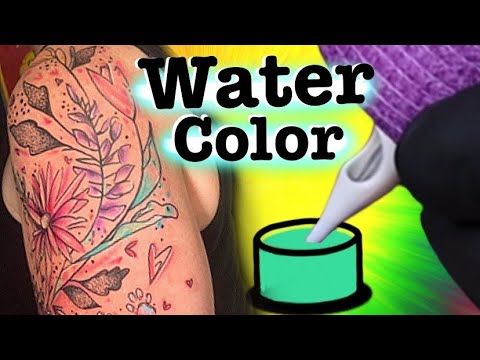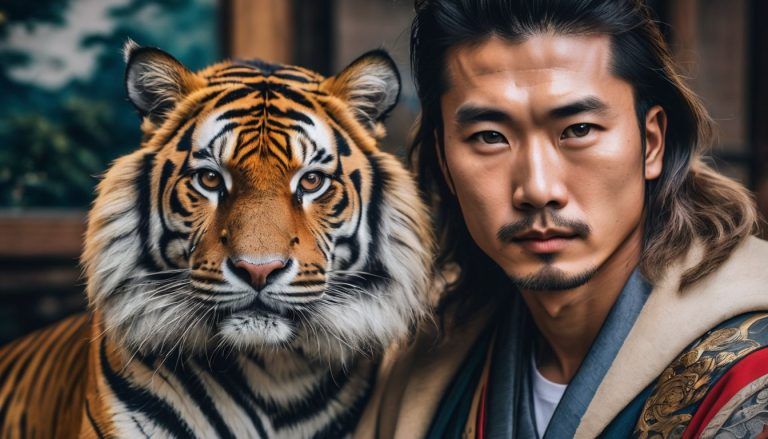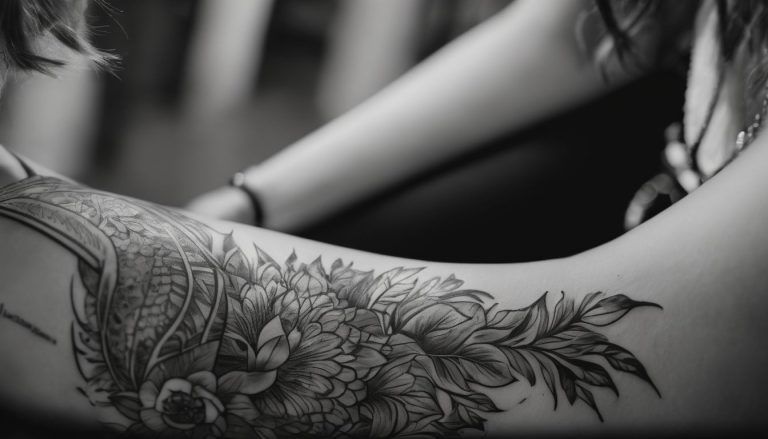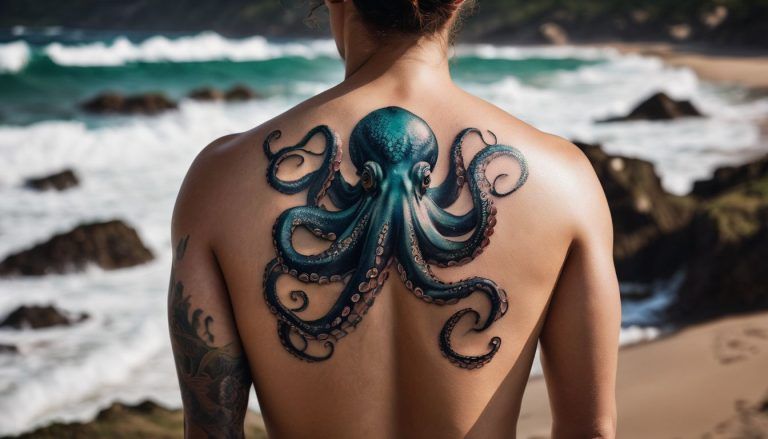The Ultimate Guide to Watercolor Tattoos: Meaning, Ideas, and Long-Term Care
Deciding to get a tattoo is big, but picking the right style can be even trickier. Watercolor tattoos stand out with their bright colors and artistic flair. Our guide will dive into their meanings, give you cool ideas, and show you how to care for them long-term.
Keep reading – it’s time to make your body a canvas!
Key Takeaways
- Watercolor tattoos mimic the fluidity and transparency of actual watercolor paintings, offering a softer and more artistic style without heavy outlines.
- These tattoos can be less painful than traditional ones due to lighter shading techniques and may require different aftercare, such as regular moisturizing and sun protection, to maintain their vibrancy.
- Factors like sun exposure, skin type, ink quality, tattoo placement, and artist skill influence how long watercolor tattoos will last without significant fading.
- Ideal locations for watercolor tattoos include areas with minimal movement or direct sunlight; careful consideration should go into choosing an experienced artist who specializes in this technique.
- Watercolor tattoo designs are incredibly varied, including floral arrangements, animal depictions inspired by nature or mythology figures — each capable of telling a personal story through their symbolic meanings.
What are Watercolor Tattoos?
Watercolor tattoos are a unique style of body art that originated from the watercolor painting technique. They are characterized by their fluid, blending colors and lack of black outlines, creating a soft and ethereal look on the skin.
Meaning and Origins
In the world of body art, watercolor tattoos stand out with their vibrant colors and artistic expression. Mimicking the fluid and translucent qualities of watercolor paintings, these tattoos bring a splash of creativity to the skin.
The style is relatively new in tattoo history but has quickly gained popularity for its ability to capture the delicate beauty of a watercolor artwork. Artists use a blend of subtle gradients and bright hues without heavy outlines, making each piece resemble a painting on canvas.
The origins of watercolor tattoos trace back to innovations by pioneering tattoo artists who wanted to push the boundaries beyond traditional styles. They took inspiration from actual watercolor artists, using techniques that allow colors to bleed and merge in unique ways.
This approach results in master art pieces that defy expectations—a far cry from conventional solid-line tattoos. These designs have become serious works of art, offering individuals a way to showcase their personality through more fluid and less defined visuals on their bodies.
Unique Characteristics
Watercolor tattoos have unique characteristics that set them apart from traditional tattoo styles. With their vibrant colors and soft edges, watercolor tattoos are often likened to beautiful paintings on the skin.
The technique involves blending and layering different hues to create a stunning watercolor effect, making each tattoo a one-of-a-kind masterpiece. These tattoos often incorporate splashes of color and abstract brush strokes, giving them an artistic and whimsical appeal that’s distinct from other tattoo designs.
The use of watercolor techniques allows for a more organic flow within the design, creating a sense of movement and fluidity that traditional tattoo styles may not capture as effectively.
Pain and Longevity of Watercolor Tattoos
Watercolor tattoos tend to be less painful compared to traditional tattoos due to their lighter and more delicate application. Factors such as sun exposure, skin type, and the quality of ink used can affect the longevity of watercolor tattoos.
Pain Comparison to Traditional Tattoos
When comparing the pain experienced during the inking of watercolor tattoos to traditional tattoos, several factors come into play. Here is an HTML table that summarizes the key differences:
| Aspect | Traditional Tattoos | Watercolor Tattoos |
|---|---|---|
| Technique | Often involves deeper needle penetration | May require a lighter touch with less needle pressure |
| Color Packing | Requires more saturation and repeated passes | Typically softer shading with less ink density |
| Shading | Can cause more discomfort due to layering | Blending colors might be gentler on skin |
| Ink Volume | More ink can lead to increased pain | Less ink often equates to less pain |
| Pain Level | Can be more intense due to techniques used | May be perceived as less painful overall |
Professionals suggest that watercolor tattoos might feel less painful because of the technique and approach used. It is, however, important to remember that pain is subjective and can vary widely from person to person. Artists from Inkaholik Tattoos emphasize discussing aftercare to maintain the tattoo’s vibrancy, regardless of the style.
Factors That Affect Longevity
After understanding the pain comparison between traditional and watercolor tattoos, it’s essential to consider the factors that significantly impact the longevity of watercolor tattoos. Here are some key factors:
- Sun exposure: UV rays can cause fading and discoloration of watercolor tattoos over time, so it’s crucial to protect them with sunscreen or clothing.
- Skin type: Different skin types may respond differently to tattoo ink, affecting how vibrant and long-lasting the colors remain.
- Tattoo aftercare: Proper moisturizing and avoiding excessive exposure to water can help maintain the integrity of the tattoo colors.
- Location on the body: Areas with more friction or movement, such as joints, may experience faster fading compared to other parts of the body.
- Skill of the artist: A well-executed tattoo by a skilled artist using high-quality ink contributes to better longevity.
Tips for Taking Care of Watercolor Tattoos
Proper care and maintenance of watercolor tattoos is essential for preserving their vibrant colors. This section will cover important tips such as moisturizing regularly and protecting them from sun exposure to prevent fading.
Moisturizing and Sun Protection
Moisturizing your watercolor tattoo is crucial for its long-term vibrancy. Use fragrance-free, hypoallergenic lotion to keep the skin hydrated without causing irritation. Applying sunscreen with a high SPF is essential to protect the colors from fading due to sun exposure, ensuring lasting beauty and vividness of your watercolor tattoo designs.
Be diligent about keeping your skin moisturized and shielded from direct sunlight. Avoid lotions with harsh chemicals that could compromise the integrity of your tattoo’s hues. When spending time outdoors, make sure to reapply sunscreen regularly to safeguard against UV damage and preserve the brilliance of your watercolor tattoo over time.
Avoiding Fading and Touch-ups
To maintain the vibrancy of watercolor tattoos and minimize the need for touch-ups, it’s important to shield them from direct sunlight. Choose areas of the body that are less exposed to UV rays to help preserve the colors over time.
Also, remember to moisturize your skin regularly as dryness can contribute to faster fading of tattoo pigments. Proper aftercare and protection from harsh elements will go a long way in preserving the beauty of your watercolor tattoo.
Consider seeking advice from experienced artists on how best to care for your specific tattoo design. By following their recommendations, you can ensure that your watercolor tattoo remains stunning for years to come without frequent touch-ups or color corrections.
Stunning Watercolor Tattoo Ideas
Explore the beauty of watercolor tattoos with stunning floral designs, animal and nature-inspired tattoos, and pop culture and mythology tattoos. These unique and vibrant designs can be a beautiful expression of your personality and interests for your next tattoo.
Floral Designs
Watercolor tattoos featuring floral designs are a popular choice for those seeking a delicate and artistic tattoo. They often incorporate vibrant colors and intricate detailing to represent the beauty of nature. Here are stunning ideas and tips for caring for watercolor floral tattoos:
- Incorporate various flowers such as roses, peonies, or sunflowers to create a colorful and dynamic bouquet on the skin.
- Choose a skilled artist who specializes in watercolor techniques and has experience with detailed floral designs to ensure a beautiful outcome.
- Discuss aftercare with the artist to maintain the vibrancy of the colors; proper moisturizing and sun protection are essential.
- Consider placement carefully when opting for a floral design; areas with minimal movement will help preserve the intricacy of the artwork over time.
- Remember that watercolor tattoos require touch – ups over time to combat fading, especially with vibrant colors like those found in floral designs.
- Opting for a watercolor floral tattoo allows individuals to express their love of nature while embracing the unique artistry of this tattoo style.
- Vibrant petals, subtle shading, and delicate lines can bring these floral watercolor tattoos to life, creating an eye-catching and beautiful piece of body art.
Animal and Nature Inspired Tattoos
Moving from floral designs to animal and nature inspired tattoos, these watercolor tattoo ideas take inspiration from the natural world and its diverse creatures. Incorporating animals and elements of nature, these tattoos can bring a sense of connection and beauty to your body art.
- Animals such as birds, butterflies, and wild animals like wolves and bears are popular choices for watercolor tattoos, symbolizing freedom, transformation, strength, and resilience.
- Elements of nature like flowers, trees, mountains, and oceans are often used in watercolor tattoos, representing growth, beauty, stability and the power of the natural world.
- Watercolor techniques can be used to create vibrant landscapes or ethereal scenes featuring animals in their natural habitats or interacting with elements of nature.
- The use of bold colors combined with soft gradients gives these tattoos a dreamy quality that captures the spirit of the wilderness and the serenity of natural surroundings.
- When considering an animal or nature inspired watercolor tattoo, it’s essential to choose an artist who specializes in this style and has experience in creating intricate details and blending colors to bring your vision to life.
- These tattoos require proper aftercare to maintain their vibrancy over time; it’s important to consult with your artist on how to preserve the delicate colors and lines of your animal or nature-inspired watercolor tattoo.
Pop Culture and Mythology Tattoos
Continuing from animal and nature inspired tattoos, pop culture and mythology tattoos are a popular choice for those seeking unique and symbolic designs. These tattoos often draw inspiration from beloved movies, TV shows, books, or ancient myths and legends. The vibrant colors of watercolor tattoos can bring these pop culture and mythology designs to life in a captivating way.
- Pop Culture Tattoos
- Mythology Tattoos
- Symbolic Meanings
- Creative Interpretations
- Personal Stories
- Enduring Appeals
The Untold Truth About Watercolor Tattoos
Debunking common myths about the pain, longevity, and fading of watercolor tattoos. Exploring ideal locations for watercolor tattoos and tips for choosing the right artist to bring your design to life.
Pain, Longevity, and Fading Myths
Watercolor tattoos are often associated with less pain compared to traditional tattoos. The use of softer lines and lighter shading techniques can result in a milder discomfort during the tattooing process, making them more manageable for those with lower pain tolerance.
Factors such as skin type, aftercare, and artist skill play significant roles in the longevity of watercolor tattoos. Proper care, including moisturizing and sun protection, key contributors to maintaining the vibrancy and preventing premature fading.
The myths surrounding the potential for quick fading of watercolor tattoos have been debunked through proper care and upkeep practices; they can last just as long as traditional tattoos when cared for effectively.
Ideal Locations for Watercolor Tattoos
Watercolor tattoos are best suited for areas with minimal movement and less exposure to the sun, such as the upper back, shoulder blade, or thigh. These locations provide a stable canvas for the intricate design and vibrant colors of watercolor tattoos to remain undisturbed over time.
Additionally, placing watercolor tattoos on these areas reduces the risk of fading due to sun exposure, ensuring that the stunning hues remain vivid for years to come.
When choosing an ideal location for your watercolor tattoo, consider areas that allow you to showcase its beauty while also providing a conducive environment for long-term preservation.
Tips for Choosing an Artist
When choosing an artist for your watercolor tattoo, consider their experience and expertise in this specific style. Look for artists who have a portfolio showcasing vibrant and well-executed watercolor designs, demonstrating their skill with color blending and fluidity.
It’s essential to discuss aftercare with the chosen artist, as they can provide valuable insights on how to maintain the colors’ vibrancy over time. Additionally, seek recommendations from previous clients and read online reviews to ensure that you select a reputable artist who can bring your watercolor tattoo vision to life.
Tattoo artists specializing in watercolor tattoos should be knowledgeable about proper placement to enhance the longevity of your tattoo. They should also be able to advise on skincare routines or touch-up options when necessary.
Conclusion
In conclusion, watercolor tattoos offer a vibrant and artistic way to express individuality through body art. Proper care and maintenance can help preserve the beauty of these masterpieces for years to come.
With the right artist, placement, and aftercare routine, watercolor tattoos can be long-lasting pieces of wearable art that continue to captivate with their stunning colors and unique designs.
Embracing this trend means embracing the opportunity to make a bold statement while enjoying the lasting beauty of watercolor tattoos.
FAQs
1. What does a watercolor tattoo mean?
A watercolor tattoo often has vibrant colors and soft edges, similar to a painting. The meaning varies with designs and the person’s personal story or symbolism.
2. How do I take care of my new watercolor tattoo?
After getting your watercolor tattoo, follow your artist’s aftercare instructions carefully, which will include keeping it clean, moistened, and protected from the sun to prevent fading.
3. Can watercolor tattoos last long without losing their color?
Yes, with proper long-term care including sunscreen protection and occasional touch-ups if needed, your watercolor tattoo can remain vibrant for years.
4. Where is the best place on my body to get a watercolor tattoo?
Watercolor tattoos look great in many places; choose an area like arms or legs where you want to show off the trend-worthy design and make sure it fits well with your style.
5. Are there specific designs that work best for watercolor tattoos?
Absolutely! From floral patterns to abstract art pieces – there are countless watercolor tattoo ideas for women and men that can provide inspiration for unique and meaningful ink.










